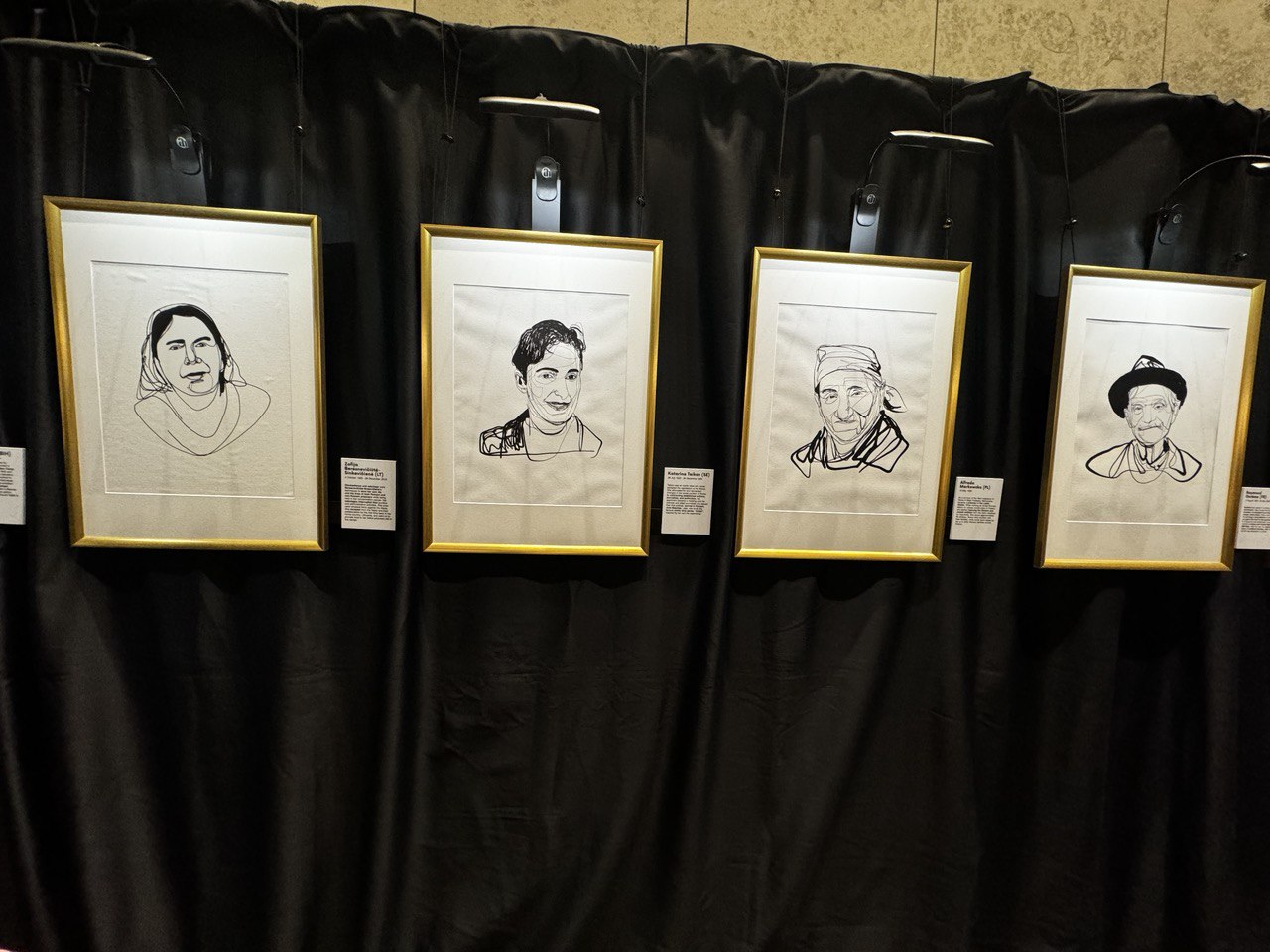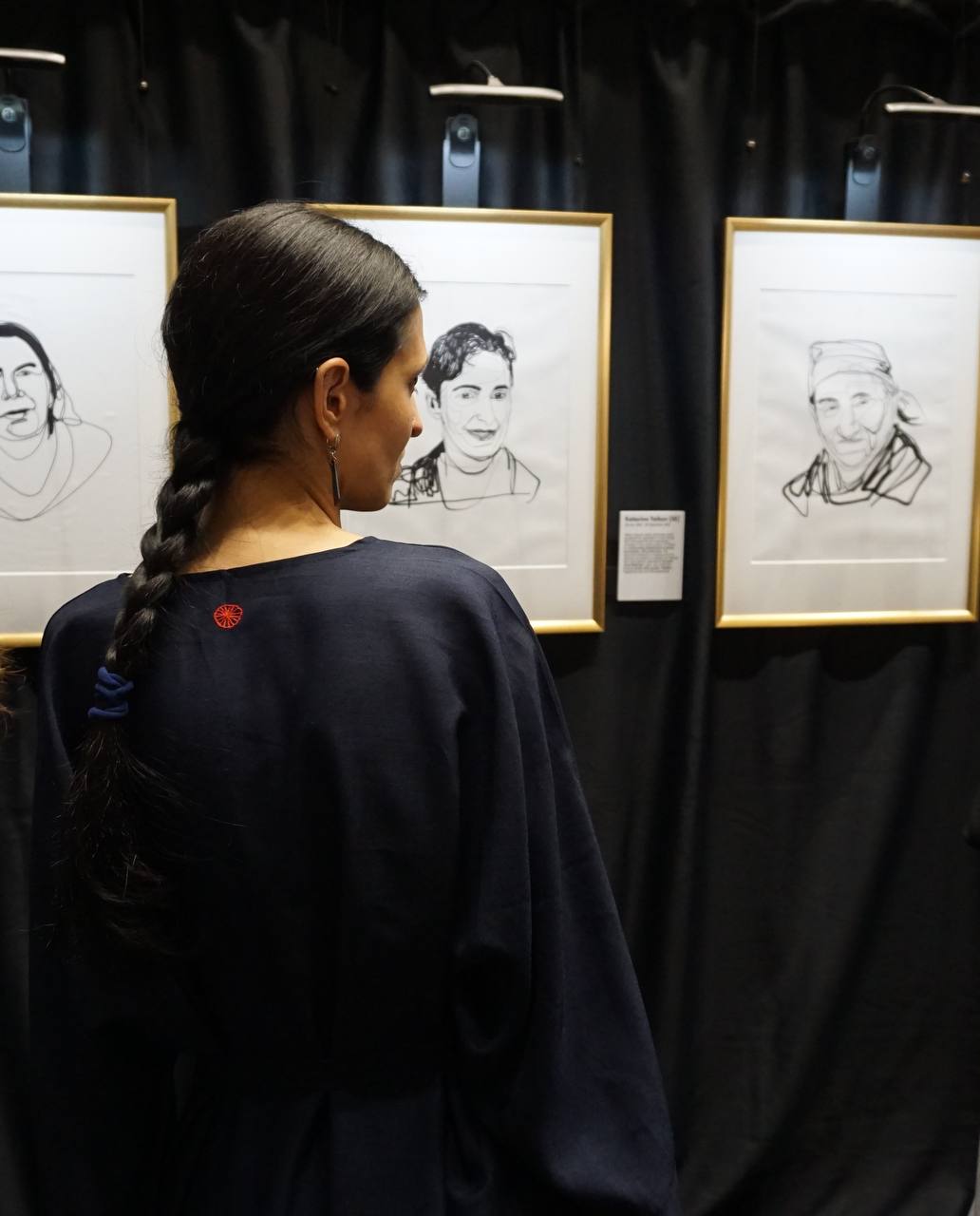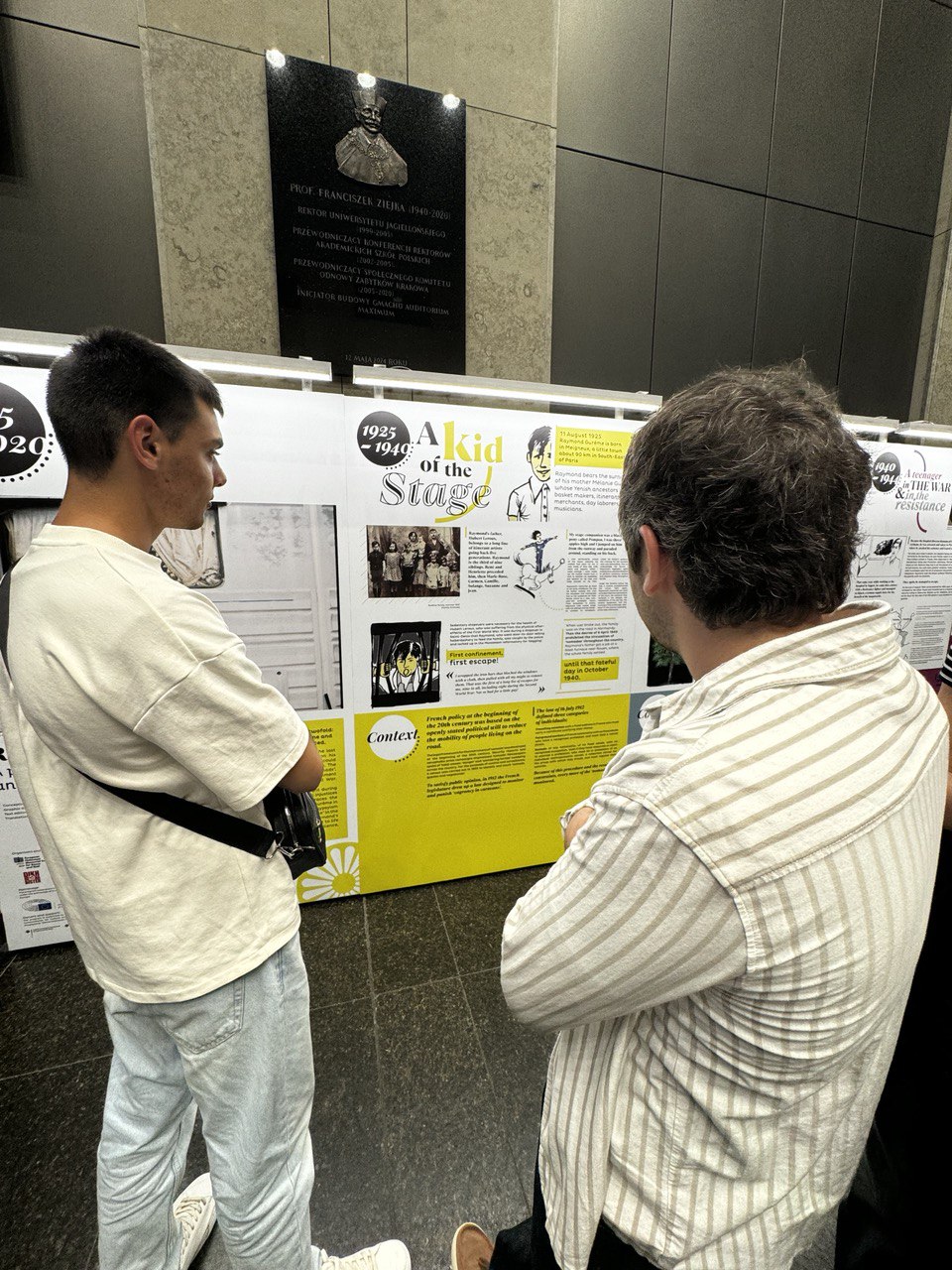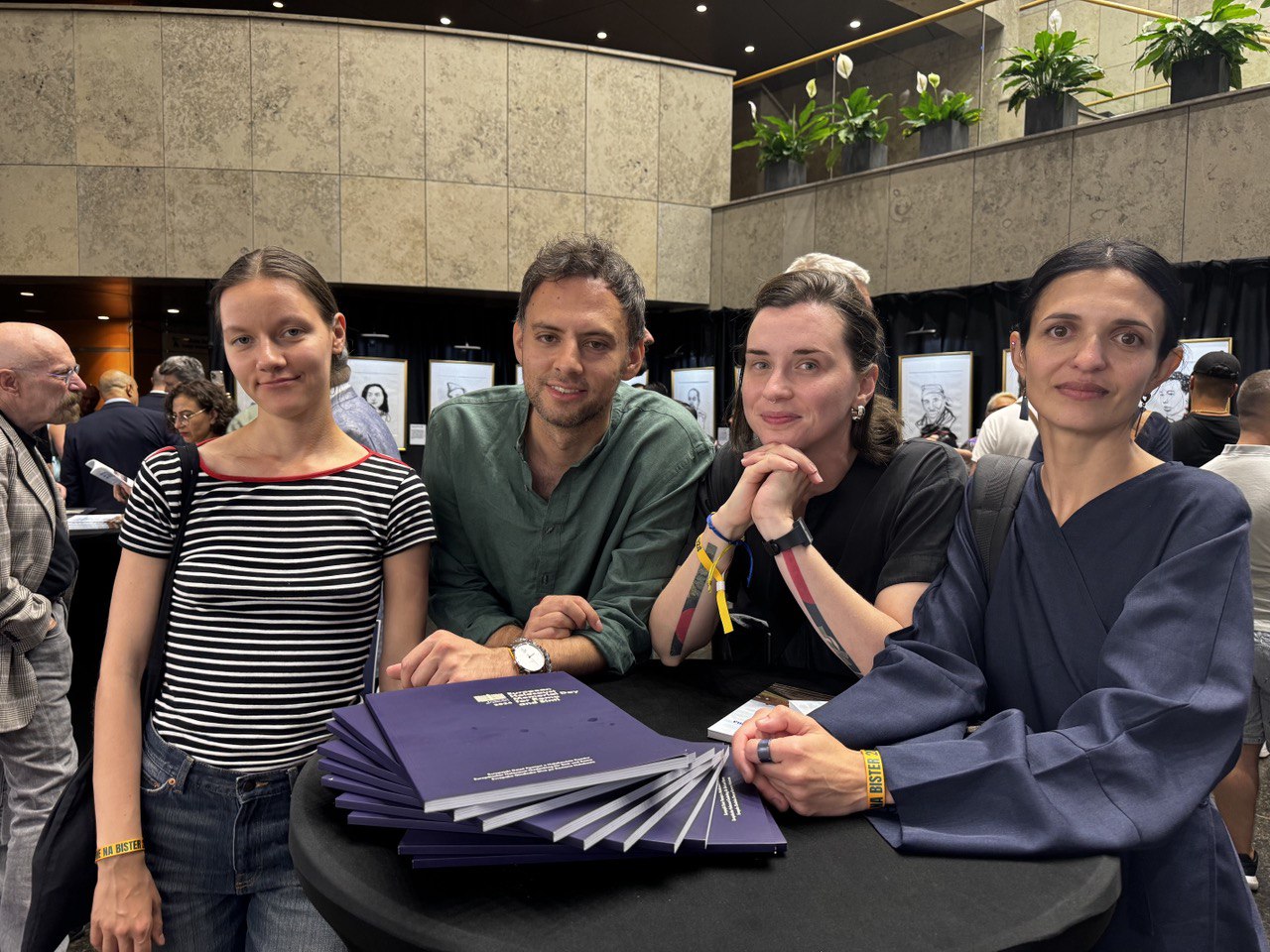History speaking through art
The history of Romani Genocide is a painful, difficult, and heartbreaking story. At the same time, there are lots of blank spots in it, as witnesses are afraid to talk—even today. So the testimony we have not are extremely valuable. One way to tell the story is via art. So, within the framework of the annual ceremony of commemoration of Romani genocide victims in the former concentration camp, Auschwitz-Birkenau—Dikh He Na Bister'2024 («Look And Do Not Forget ивись і не забувай» - ed.), two art exhibitions have been presented, entitled: «Romani Resistance Heroes» and the art exhibition dedicated to Raymond Gureme, a Romani Holocaust survivor.
«Romani Resistance Heroes»
Sharp black lines against a white background are the best reflection of human character. Characters of humans, so different, yet so alike. They are Romanis. They are heroes of the Resistance.

Photo: A fragment of the «Romani Resistance Heroes» exhibition
The exhibition opens, to the attention of viewers, the world of Romanis who were fighting for freedom and human dignity during the Second World War. These faces are the faces of historical events, the living testimony of pain, losses, but also of the incredible endurance of the spirit. Emmanuel Barica, a Romanian self-taught painter whose works became grounds for this exhibition skilfully interconnects traditional forms with contemporary artistic techniques as he depicts those who remained unnamed but not forgotten.
Whereas the rethinking, the revelation of the history of Romanis is a part of global processes whereby the events of the past are studied. After all, Romanis—just like many other ethnicities—did suffer during the Second World War.
The exhibition entitled «Romani Resistance Heroes» reminds us of how important it is to preserve the memory of those events, to not forget about them, to not stay silent about them but instead to tell the story of those who deserve recognition, and tell this story out loud. And it reminds us of the fact that there is a whole lot of things we do not know about our past.

Photo: Samira Tymchenko
«Personalisation of memory is a most important thing. It helps us see real stories about real people, beyond the abstract genocide. Interaction with real life stories (visual, audial, tactile etc) gives relief features to memory and leaves quite human imprints behind. This is a pretty simple yet efficient way to enlightenment as in this way, we communicate with people using a language they understand», – says Samira Tymchenko, a Dikh He Na Bister participant from Ukraine.
The life and resistance of Raymond Gurême
The second exposition is the story of life and resistance by Raymond Gurême, a survivor. Mr Gurême has always called for a joint struggle versus anti-Gypsyism and violence in general.

Photo: An exposition dedicated to Raymond Gurême
Raymond Gurême’s life story is worthy of being in textbooks, worthy of becoming a plot for movies… Since the age of 2, Raymond has been performing as an acrobat or a clown in a home-made mobile circus. In October 1940, his entire family was arrested by the French gendarmes. A month later, the Gurême family was send to the camp for the interned persons. In summer 1941, Raymond has managed to escape. He worked on farms and came back to Lyon, and then to Montreuil-Bella in order to smuggle food into the camps. In August 1943 he was arrested—again—and deported to a labour camp. Once upon a time he was severely beaten by the Nazis—so severely that he lost his eyesight in one eye. Eventually, Raymond has managed to escape once again—with the assistance of a French railway worker who hid him in the train and then shipped him back to France. It was not until 1950 that he finally managed to reunite with his family. After the war, the Gurême family has received neither financial nor moral support. Alas, on the 24th of May, 2020, at the age of 94, Mr Gurême has passed away…
The expositions have left a deep imprint in the hearts of Dikh He Na Bister-2024 participants. The atmosphere of the exhibition was filled with emotions. People stopped at portraits, staring into them for a long time, into those faces that were speaking to us through time. Pain and pride, the bitterness of losses and the hope for a better future—all of those things were something we could read in the eyes depicted in the paintings and reflected in the eyes of visitors.

Photo: Representatives of the ARKA team at an art event
The art event was organised by the European Roma Institute for Arts and Culture (ERIAC) and by the Central Council of German Roma and Sinti People.
Photo by: Daria VORONA, Eva RAISKA
See also
- Стереотип замість культури: як TikTok спрощує ромську ідентичність
- Як роми захищають Україну під час війни
- День Конституції України. Боротьба за права і свободи триває
- Януш Марковський: ром, воїн та батько. Війна навчила цінувати кожну хвилину миру
- «Навіть уборщицею не хотіли брати, бо я — циганка»
- «Коли любиш — можеш і критикувати»: як німкеня Сара Райнке стала патріоткою України
- Табір «Баро Гудло»: як деякі жарти принижують
- Письменник мандрів та дороги. Ким був Матео Максимов для французьких ромів
- Життя ромів в об’єктиві авторки Єви Райської
- Роми в літературі: як їх зображували українські письменники Іван Франко та Марко Черемшина